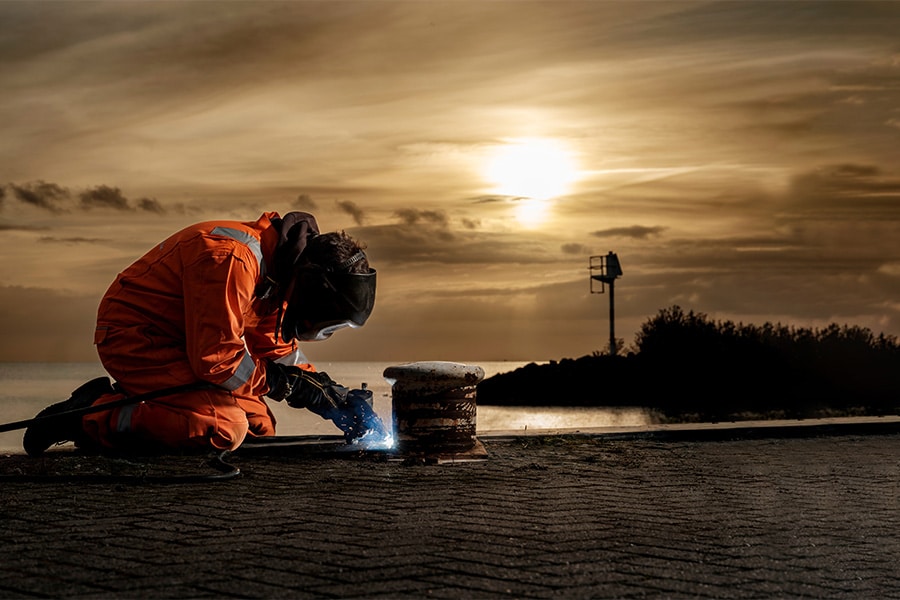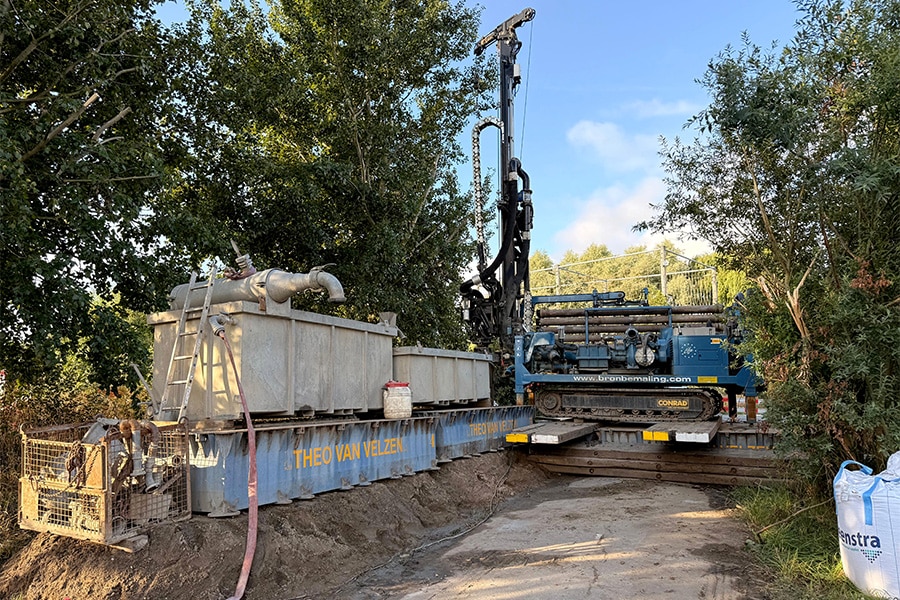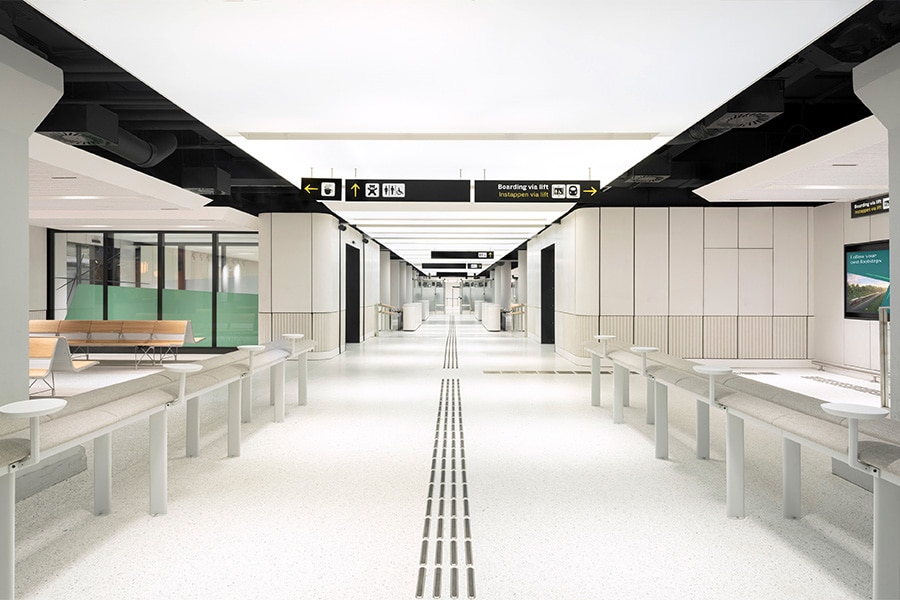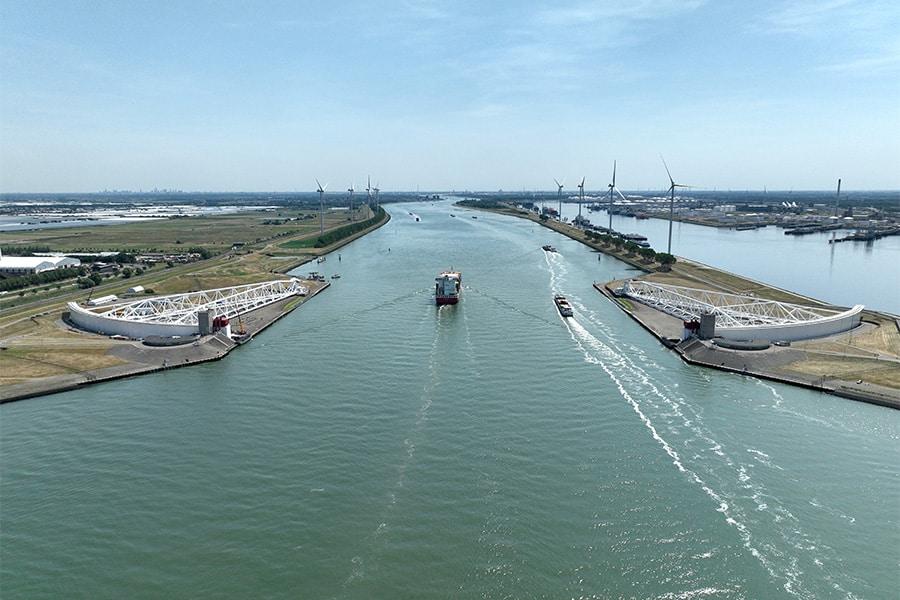
Suspension cables Merwede Bridge fitted with innovative wrapping
During a periodic inspection at the Merwede Bridge in the A27, several suspension cables, which attach the driving deck to the arch bridge, were found to be rusting. It was a result of wear on the preservation. Constructively, the suspension cables still appeared to be satisfactory, but of course it was necessary to apply a new preservation as soon as possible. The Department of Public Works opted for an innovative wrapping by DYWIDAG that minimized inconvenience to road traffic.
Rusting on parts on which a bridge deck hangs is obviously not desirable, begins Robert Jansen of DYWIDAG. "The coating on the suspension cables was so bad that they had to be recoated so that the corrosion cannot continue. Initially, the idea was to blast the suspension cables and reapply a multilayer paint system, but that has a huge impact on traffic flow. Lanes have to be closed for an extended period of time because the bridge is being scaffolded." So Rijkswaterstaat was actually looking for an out-of-the-box solution. The Schreuder engineering firm involved therefore knocked on DYWIDAG's door because of its cableskin technology.
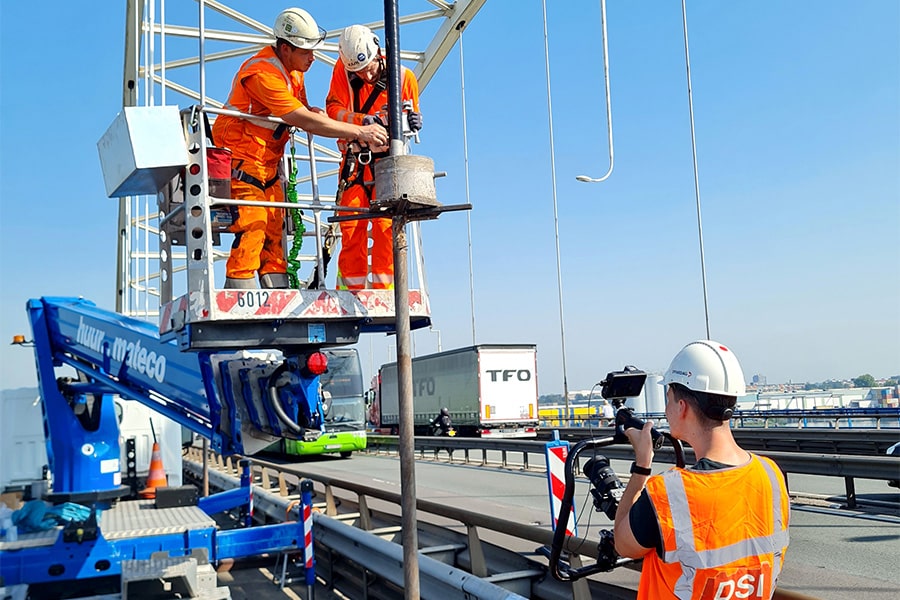
ETA-certified system
Cableskin from DYWIDAG has been successfully used abroad for many years for the preservation of steel structures and is an ETA-certified system. "In our country it is a relatively unknown technique," says Robert. "We explained the system to the Department of Public Works and they were immediately enthusiastic. Especially also because of the minimal disruption it causes. In order to demonstrate this in practice, we successfully ran a trial in the preliminary phase. Not much later, we were awarded the contract." How does the technology work? Robert explains, "First the coarse paint blisters are removed from the hanger with a scraper, after which we apply the wrapping in two layers. The first layer forms the primer and is done with a tape that has butyl rubber on two sides. Over this comes a top layer, a tape with butyl rubber on the inside and on the outside a PE layer that can be made in any color, is water-repellent and resists UV. When butyl rubber is applied with proper tension and pressure, it vulcanizes and eats into the hanger. You never get it off."
64 suspension cables
Applying cableskin can be done in several ways: manually, semiautomatically or fully robotized. "At the Merwede Bridge we chose semi-automatic because the hangers are relatively short, ranging from 10 to 35 maximum meters," Robert explains. "This involved working from an aerial platform on the bike path and using an auxiliary tool when wrapping, ensuring the right angle and correct tension and pressure. In the process, we worked exclusively during the day, with only one lane having to be closed. And the latter was purely for the safety of our people, as we did not use the lane itself. In total, we spent ten weekends applying the wrapping to the 64 suspension cables, 32 on each side. At the same time, Knook Staalkonstrukties tackled and improved the connections between the suspension cables and the roadway deck, which means that the Merwede Bridge can now withstand many years again. Unlike a coating, with cableskin we guarantee weather protection for at least 50 years."
